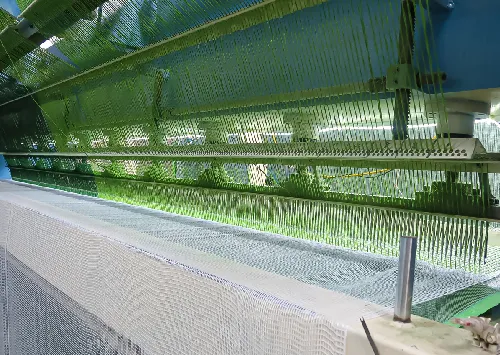Benefits of Choosing Synthetic Grass for Your Outdoor Spaces and Landscaping Solutions
Nov . 27, 2024 10:22 Back to list
The Rise of Synthetic Lawns A Sustainable Solution for Modern Landscaping
In recent years, synthetic lawns have gained considerable popularity as an alternative to traditional grass. As urban areas expand and climate concerns grow, homeowners and municipalities are increasingly turning to artificial turf for its myriad benefits. This shift is not only about aesthetics but also about creating sustainable, water-efficient, and low-maintenance landscapes.
The Appeal of Synthetic Lawns
One of the primary reasons for the rising demand for synthetic lawns is their low maintenance requirements. Traditional grass requires regular mowing, weeding, watering, and fertilizing, all of which can consume significant time, money, and resources. In contrast, synthetic lawns are virtually maintenance-free once installed. This convenience is especially appealing to busy homeowners and communities looking to streamline landscaping efforts.
Furthermore, synthetic lawns are highly durable, capable of withstanding heavy foot traffic without developing bare patches or muddy spots. This durability makes synthetic grass an excellent choice for pet owners, playgrounds, and sports fields. The ease of cleaning and the resistance to pests add to its allure, ensuring that artificial lawns remain an attractive option year-round.
Environmental Benefits
Environmental considerations play a crucial role in the growing interest in synthetic lawns. One of the biggest challenges with natural grass is the vast amount of water it requires, particularly in arid and drought-prone regions. Maintaining a green lawn can lead to significant water consumption, which is unsustainable in many parts of the world. By opting for synthetic grass, homeowners can dramatically reduce their water usage, contributing to water conservation efforts.
Moreover, synthetic lawns eliminate the need for chemical fertilizers and pesticides, which can harm local ecosystems. When it rains, these chemicals often wash into storm drains and waterways, polluting natural habitats. With synthetic lawns, homeowners can create a safe play environment for children and pets without the worry of chemical exposure.
Another critical aspect of synthetic grass is its capability to be made from recycled materials. Many modern synthetic lawns are manufactured using plastic fibers derived from recycled polyethylene or polypropylene. When these products reach the end of their life cycle, they can often be recycled again, creating a circular economy that reduces waste and promotes sustainability.
synthetic lawn

Cost Considerations
While the initial installation cost of synthetic lawns can be higher than that of traditional grass, the long-term savings often justify the investment. Homeowners can save significantly on water bills, maintenance costs, and landscaping services over time. Additionally, many synthetic lawn manufacturers now offer warranties that can last up to 15 years, making the upfront investment more appealing.
However, it’s important to consider the environmental cost of production and disposal of synthetic turf. Critics argue that while synthetic lawns save water and chemicals, the manufacturing process is energy-intensive and typically involves non-renewable materials. Choosing high-quality products with a focus on sustainability can mitigate these concerns.
Aesthetics and Versatility
Aesthetic appeal is another significant factor in the popularity of synthetic lawns. With advancements in technology, modern synthetic grass is designed to mimic the appearance and texture of natural grass closely. Available in various colors, heights, and styles, homeowners can select options that best suit their needs and preferences.
Beyond residential use, synthetic lawns are gaining traction in commercial landscaping, golf courses, and public parks. Their versatility allows for creative landscaping designs that remain lush and green, regardless of weather conditions.
Conclusion
Synthetic lawns represent a modern solution to traditional landscaping challenges. With advantages in maintenance, environmental sustainability, cost efficiency, and aesthetic flexibility, they appeal to a diverse range of consumers. As society continues to prioritize sustainability and water conservation, synthetic lawns are poised to play a pivotal role in the future of landscaping. Embracing this innovative approach can lead to beautiful, functional green spaces that benefit both homeowners and the environment alike. Whether it’s for a backyard oasis, a pet-friendly area, or a vibrant community park, synthetic lawns offer a sustainable solution that aligns with the needs of the 21st century.
-
Durable, Eco-Friendly Turf for Balcony | Enhance Your Urban Space
NewsNov.24,2025
-
Turf Between Pavers: Sustainable Green Paving Solutions for Modern Urban Spaces
NewsNov.24,2025
-
Discover the Benefits of Turf and Pavers Backyard | Sustainable Outdoor Design
NewsNov.24,2025
-
Top Quality Artificial Grass – Sustainable, Durable, and Stylish Turf Solutions
NewsNov.24,2025
-
Durable and Eco-Friendly Thick Artificial Grass Solutions | Hoya Grass
NewsNov.24,2025
-
Synthetic Turf: Sustainable Green Solutions for Sports, Industry & Urban Living
NewsNov.24,2025
Products categories










